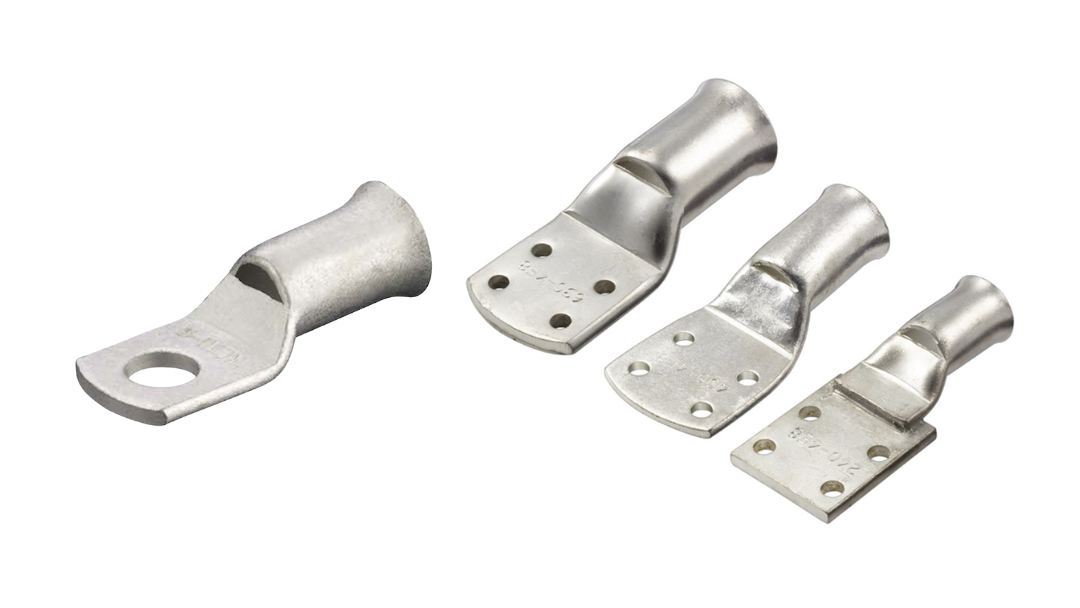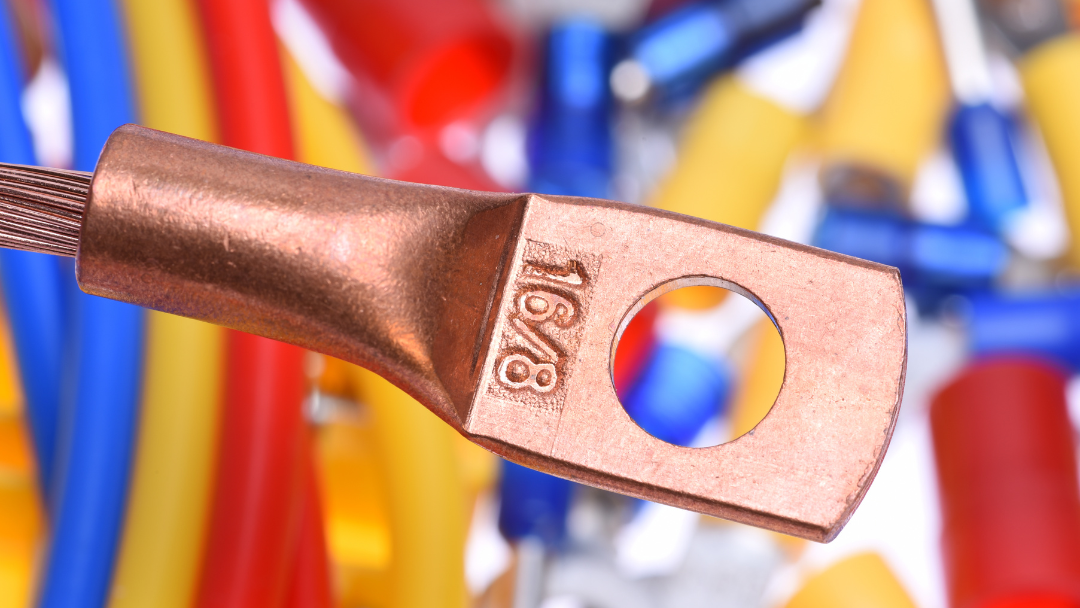Copper terminals are essential pieces of kit for professionals in the automotive, electrical, manufacturing and construction industries.
In a nutshell, they join the ends of stranded wires to electrical devices, providing secure and reliable flows of electricity. But not all copper terminals are made the same, and choosing the right one is key to a successful installation.
In this guide, we’ll walk you through how to choose the right copper terminal and share expert tips for installing copper cable lugs.
What are copper terminals?
Copper terminals are small metal connectors that terminate the ends of wires, so they can be attached to other electrical equipment. Just like you plug an appliance into a wall, copper terminals "plug" wires into devices or power sources.
As the name suggests, these terminals are made from copper, which is highly conductive and easy to crimp. Most are tin-plated for extra corrosion resistance, but nickel, silver and gold are also used.
You’ll find copper terminals in:
- Automotive manufacturing
- Industrial electrical installations
- Telecommunications infrastructure
- Renewable energy systems
- Heavy equipment and agricultural machinery
Related reading: Electrical Buyers’ Guides

Common types of copper terminals
If you’re wondering how to choose the right copper terminal, the next section breaks down the best options for different applications.
Copper ring terminals
Thanks to their looped ends, copper ring terminals are perfect for connecting wires to screw-type posts, studs or bolts. The closed-ring design keeps the terminal securely attached, even if the screw comes loose.
These are some of the best copper connectors for automotive use, providing a vibration-resistant connection to battery posts, grounding points and starter motors.
→ Shop Copper Ring Terminals now
Copper spade terminals
Copper spade terminals have a fork-shaped end that allows for easy attachment to – and removal from – screw-type terminals. Known for their convenience, you can install them without fully removing screws or bolts.
Common applications include connecting wires to switches and control boards.
Copper butt connectors
Copper butt connectors join two wires together. These hollow, cylindrical tubes hold stripped wires end-to-end, creating a reliable splice. You'll find them most often in vehicle wiring repairs and modifications.
Copper cable lugs
Although the terms are sometimes used interchangeably, copper terminals and copper cable lugs are slightly different – with cable lugs being a specialised type of copper terminal.
Copper cable lugs are heavy-duty connectors designed for high-current applications, such as attaching thick grounding cables to industrial electrical equipment.
Tinned copper terminals
Tinned copper terminals are standard copper terminals coated in a thin layer of corrosion-resistant tin. Tin is especially durable against moisture, salt and chemicals, making it perfect for marine and outdoor use.
Factors to consider when choosing copper terminals
When selecting copper terminals, there are several important considerations to take into account. Use this checklist to find your perfect match:
- Wire gauge compatibility – Does the terminal fit the wire size?
- Current and voltage – Can the terminal handle the electrical load?
- Environmental conditions – Do you need a protective coat or insulation?
- Installation method – Will you be crimping, soldering or screwing?
- Maintenance – Will you need easy access for regular maintenance?
Related reading: A Quick Guide to Cable Covers & Protectors

Installation tips and best practices
The success of your electrical job largely depends on the quality of the installation. You don't necessarily need decades of experience if you have the right tools, plenty of diligence and an eye for detail. Here are a few top tips to keep in mind:
- Turn off all power sources beforehand
- Use proper crimping tools – pliers don't apply enough pressure
- Strip the insulation and ensure wires are neatly inside the terminal barrel
- Use appropriate force when crimping
- Check the connection with a pull test
- Regularly inspect connections for wear
Find the right copper terminal for your job
Simply follow our guidance and assess your specific needs to find the right copper terminal for your job. We stock a wide range of crimp copper terminals, copper ring terminals, heavy-duty copper terminals and more – perfect for industrial, commercial, and residential projects.
Browse our full range today or contact our team to discuss your requirements.


